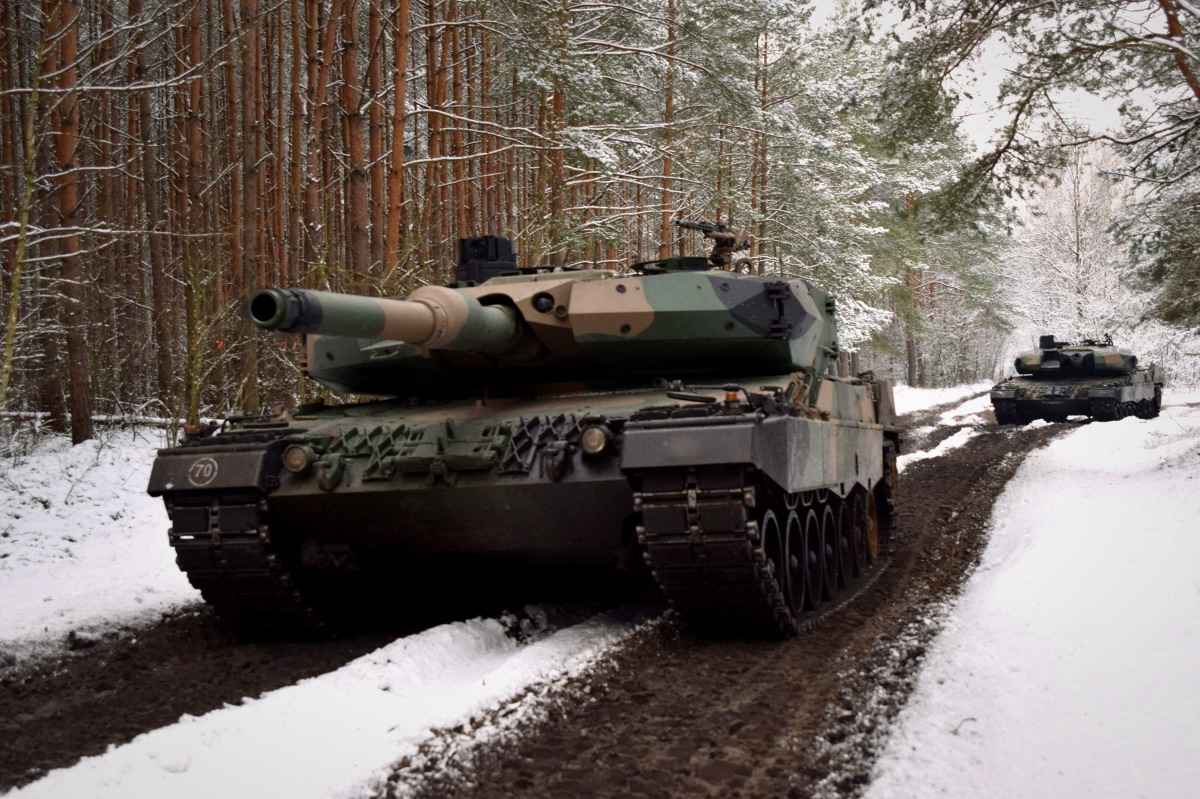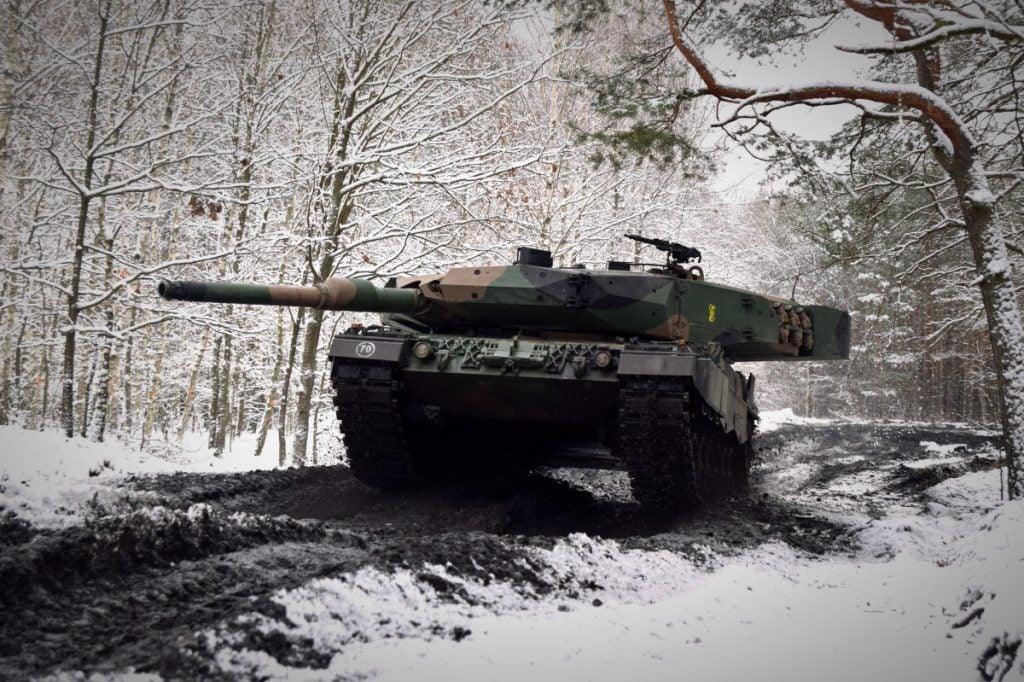Wargame Study Shows Polish Armed Forces Obliterated in Just 5 Days
On the 27 January, the Minister of Defense Mariusz Blaszczak and the President of the Polish Republic, Andrzej Duda, announced that the Wargame “Winter-20” had been conducted by the Polish Army staff personnel. “Winter-20” was held in order to test the capabilities of newly purchased equipment and some systems that have to be yet delivered and adopted by the Polish Armed Forces.
A Brief Introduction

The scenario of the game assumed a plan for the defense of Eastern Poland against a Russian invasion through the Suwalki Gap. Polish Armed Forces were tasked with the defense of the region to the East of the Vistula River for 22 days with the use of all units at the disposal of the General Staff. The fulfilment of a new modernization program for the Polish Army was modelled into the wargame. It means that the new F-35 jet fighters, HIMARS artillery system, long-range A2/AD batteries equipped with Patriot system, modernized Leopard 2A4 brigade, and new Badger IFVs, were at the disposal of the defending side. It was the largest wargame of this type conducted since 1989.
The Polish news outlet, Interia.pl, managed to gather information from the participants of the “Winter-20” wargame. The testimonies of officers that had reportedly taken part in the drills were more than grim. With the original defense plan for the East, the Polish Armed Forces were unable to hold for the anticipated 22 days. Instead, on day 4 the Russian forces managed to reach the line of the Vistula River and encircle Poland’s capital, Warsaw. On the fifth day the remaining Polish forces left on the eastern bank of the river were virtually obliterated. It was assumed that the units fighting on the first line lost between 60 to 80% of their equipment and personnel within the opening 96 hours of operations. Furthermore, Onet Wiadomości reported that some of Polish division commanders refused to fulfil orders given by the General Staff as they were incomprehensible.
A similar scenario with a similar conclusion was conducted during the wargame conducted by Marine Corps War College in 2019. NATO forces were deployed in the same region and received similar tasks to stop the Russian invasion through the Suwalki Gap. As the outcome, after merely 72 hours the Polish Armed Forces received 75% losses and were incapable of conducting any further operations. They were practically drained defending the Suwalki Gap, with the Russian spearhead achieving a major blow.
The strategy of defending the area of Eastern Poland was based on the deployment of the 1st Armoured Brigade from Western Poland to Wesola near Warsaw. The Brigade consists of new Leopard 2A5 and Leopard 2PL MBTs and is a part of a newly created 18th Mechanized Division that was formed during the 100 anniversary of Polish independence. It was the idea of a former Minister of Defense, Antoni Macierewicz, a controversial figure.
Antoni Macierewicz is a politician closely tied to the ruling Law and Justice (PiS) party and he remained in radical circles and was defense minister until the government reformed 2018. During his time in the office, the Polish Armed Forces conducted purges among high-ranking officers, academic lecturers, chiefs of various committees, directorates, and members of the general staff. Macierewicz was accused of dismantling and politicizing the armed forces as he made changes suitable to his views and demands, for example, he turned down the Airbus contract for new MH-225M helicopters. He was also the creator of the WOT formation, which has arguably deprived the Armed Forces or much needed equipment reserves. Since then, the Polish Armed Forces condition began to deteriorate rapidly and Macierewicz was replaced with the current Minister of Defense, Mariusz Blaszczak.
What happened during Winter-20?

st. szer. Paweł Bednarczyk – Polish Armed Forces
As mentioned previously, the “Winter-20” wargame conducted in January, was aimed at checking the performance of systems and units that will appear by the end of the 2020s in the Polish Armed Forces. It includes new IFVs, artillery systems, tanks, and jets, but also the new 18th Mechanized Division that is stationed in Lublin. It is uncertain whether additional Polish Army forces were modeled into the game and the state of the Polish Navy is unknown. Yet, the entirety of “Winter-20” information is restricted. The titbits and hints that were given by Interia leave some space for speculations and reconstruction of what led to such an outcome of the game.
What Do We Know So Far?
- The scenario’s aim was to test the future systems and predictions of analytics.
- The defense was set up in Eastern Poland on the right bank of the Vistula River and protects the approach to Warsaw through Suwalki Gap.
- Polish Armed Forces field four divisions of mechanized troops with modern equipment.
- On day four enemy (Russian) forces approach the line of Vistula River and encircled Warsaw.
- On day five the Polish Armed Forces in the field ceased to exist, all major ports were either blocked or destroyed, the enemy was unopposed in a further march to the West.
- Some NATO units were included in the defense plan.
Assuming accuracy of the structure of the Polish Armed Forces and its modernization plans that are available on the internet, we can reconstruct the Polish order of battle for this scenario:
Polish Armed Forces:
-> 11th Armoured Division (Miedzyrzecz)
>> 10th Armoured Cavalry Brigade
>> 34th Armoured Cavalry Brigade
>> 17th Mechanized Brigade
>> 23rd Artillery Regiment
>> 4th Anti-Aircraft Regiment
-> 12th Mechanized Division (Stetin)
>> 12th Mechanized Brigade
>> 2nd Mechanized Brigade
>> 7th Coastal Defense Brigade
>> 5th Artillery Regiment
>> 8th Anti-Aircraft Regiment
-> 16th Mechanized Division (Olsztyn)
>> 9th Armoured Cavalry Brigade
>> 15th Mechanized Brigade
>> 20th Mechanized Brigade
>> 11th Artillery Regiment
>> 15th Anti-Aircraft Regiment
-> 18th Mechanized Division (Warsaw/Lublin)
>> 1st Armoured Cavalry Brigade
>> 21st Mechanized Brigade
>> 19th* Mechanized Brigade
>> 18th** Artillery Regiment
>> 18th** Anti-Aircraft Regiment
-> 25th Air Cavalry Brigade (Tomaszow Mazowiecki)
-> 6th Airborne Brigade (Cracow/Gliwice)
-> 1st Sappers Regiment
-> 2nd Sappers Regiment
-> 2nd Engineers Regiment
-> 5th Engineers Regiment
-> 2nd Reconnaissance Regiment
-> 9th Reconnaissance Regiment
-> 18th ReconnaissanceRegiment
-> 14th Anti-Tank Regiment
-> Special Forces Component
Key:
-> Independent units
>> Units in formation
* In the process of formation
** Not yet formed
The development of the wargame suggests that the most of forces were already destroyed on the East side of the Vistula, long before the Russian Army reached Warsaw. The projected attack was swift and brutal. We can suppose that the A2/AD systems deployed were oversaturated by the enemy’s airforce and missile strikes. The new tactical units entered the kill zone and were suppressed immediately. According to Interia, within the first days, an entire battalion of a first-line formation (probably a Leopard battalion from 1st Armoured Cavalry Brigade) was obliterated. Furthermore, some of the commanders of units refused to obey orders from the general staff which resulted in full communication chaos. Meanwhile, the Russian forces managed to surpass Polish defense and reach the Vistula within 96 hours of the beginning of the conflict. This resulted in the encirclement and destruction of the remaining Polish forces that entered the pocket on the eastern side of the river.
The Staff Wants to Pull Back, The Minster Wants to Stand

The lessons were learned by the general staff quickly as the subject unfolded among experts. There are plenty of voices suggesting that in the case of a conventional war with the forces from the East, the defense of regions on the eastern bank of the Vistula River is illogical. Many units will struggle to enter the combat zone under enemy artillery fire and their capabilities for a stand-off will be much diminished. Setting up a defense line to the West seems to be a wiser option. However, Mariusz Blaszczak rejects this proposition. In his words, giving up eastern Poland without fighting is the wrong thing to do.
“Politicians of the Civic Platform Party and generals who cooperate with them state, that in case of a war we have to give our regions to the East right-away, including Podlasie, Lubelskie, Carpathia and a part of Mazovia and concentrate forces to the West. This is a mistake! The defense of our Motherland is an essential matter. The estimation that we firstly give away and then retake these provinces may become a very dreadful illusion.”
Minister of the National Defense, Mariusz Blaszczak in wPolityce
The results of the wargame are undoubtedly disastrous. Even with the newest modernization plan modeled into the simulation the deployment of the troops played against the initial plan for 22 days of defense. Having this in mind there are two questions to be answered – what failed in the first place? And was the strategy flawed from the beginning of the lack of massive forces capable to stop the enemy’s offensive? The answers to these questions remain classified.
The Minister of Defense, however, praised the outcome of the wargame in a brief interview for Onet.
“I rate this wargame positive. I would award the armed forces with an A+. Of course, there were some drawbacks but this is what the wargame was about, to challenge these drawbacks and eliminate them. This is what this wargame was for. This is a form of perfecting ourselves.”
What Next?
The conclusion of the wargame raises many questions. With the official outcome still unknown to the public, it must remain subject to speculation. One of the aspects, however, seems to remain key. The Ministry wants to defend Eastern Poland no matter the cost. Yet, the costs of this plan are tremendous and it is impossible to accept the narrative of huge success knowing that the deployment of troops far from their operational depth led to a catastrophe. With the repercussions of Winter-20 still developing we will monitor further decisions of the Ministry and report on any official news.
The opinions expressed in this editorial are those of the author and may not necessarily reflect the opinions or views of Overt Defense

